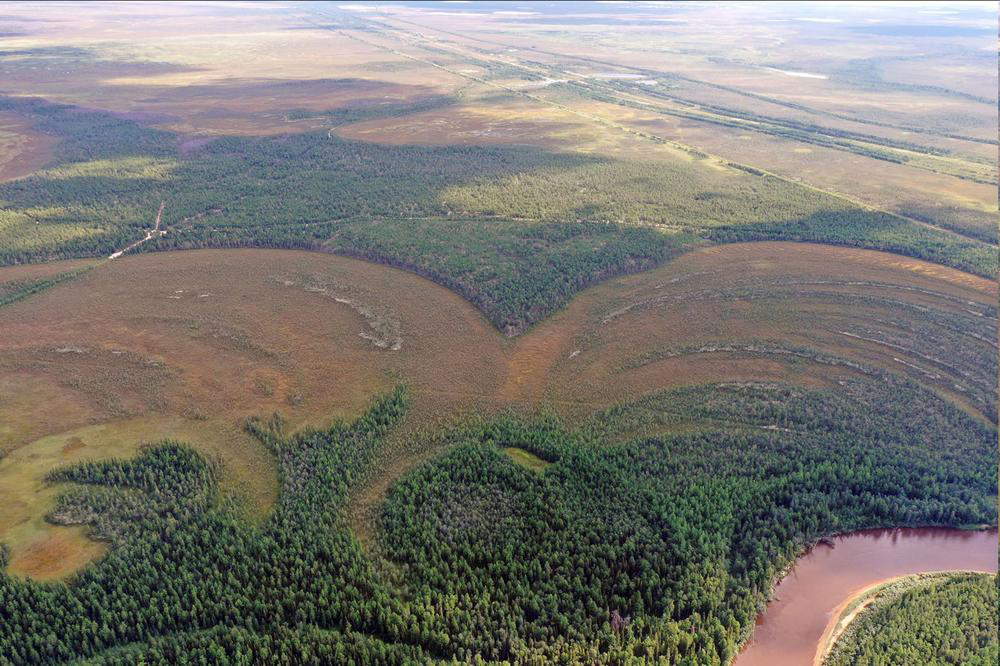The world’s oldest proven fortified settlement to date is located in Siberia . It was discovered by an international research team led by archaeologists from the Freie Universität Berlin, the Free University of Berlin-a discovery that the German university calls “revolutionary” because, according to Berlin archaeologists, it could lead to changes in our knowledge about the emergence of complex societies. The scientific study was published in the journal Antiquity of Cambridge University Press.
Research results show that hunters and gatherers in Siberia built complex defenses around their settlements as early as 8,000 years ago. “This discovery,” explains Professor Henny Piezonka of the Institute of Prehistoric Archaeology at the Free University of Berlin, “changes our understanding of early human societies and challenges the idea that people only began building permanent settlements with monumental architecture and developing complex social structures with the advent of agriculture.”
The focus of the study was the fortified settlement of Amnya, considered the northernmost Stone Age fortress in Eurasia. Tanja Schreiber, an archaeologist at the Institute for Prehistoric Archaeology at the Free University of Berlin and a doctoral student at the ROOTS Cluster of Excellence in Kiel, coauthor of the study, explains, “During detailed archaeological investigations at Amnya, we collected samples for radiocarbon dating, which confirms the site’s Stone Age status and identifies it as the oldest known fortress in the world. Our new paleobotanical and stratigraphic studies show that the inhabitants of West Siberia led a highly developed lifestyle based on the rich resources of the taiga. According to research, prehistoric inhabitants fished in the Amnya River and hunted elk and reindeer with bones and stones. To preserve their supplies of fish oil and meat, they made richly decorated pottery.”
So far, the research team has managed to identify ten pit stone age fortresses surrounded by earthen walls and wooden palisades. The buildings demonstrate the advanced architectural and defensive capabilities of the societies that insisted on these lands. However, this new discovery challenges researchers’ previous view that permanent settlements with defensive fortifications were associated only with the emergence of agricultural societies. In fact, the newly discovered Amnya settlement would disprove the idea that agriculture and livestock raising were prerequisites for diversified social structures.
“The Siberian finds, along with other global examples such as Göbekli Tepe in Anatolia,” Professor Piezonka continues, “contribute to a broader reconsideration of earlier evolutionary ideas suggesting gradual development from simple to complex societies. In various parts of the world, from the Korean peninsula to Scandinavia, hunter-gatherer communities developed large and often sedentary settlements using primarily aquatic food sources. The wealth of natural resources in the Siberian taiga, annual fishing trips and migratory herds probably played a crucial role in the creation of hunter-gatherer forts. Fortified settlements overlooking rivers may have served as strategic places to control and exploit rich fishing grounds. The competitive nature resulting from resource storage and population growth is evident in these prehistoric buildings and refutes previous assumptions that no major conflicts existed in hunter-gatherer societies.”
The new research findings, according to the University of Berlin, demonstrate the diversity of social possibilities that led to complex social organization, which is reflected in the creation of monumental buildings such as the Siberian fort at Amnya. The results of the study also underscore the importance of local environmental conditions for the development of human societies.
Pictured: the Amnya River, near which the prehistoric settlement was discovered.
 |
| World's oldest fortress found in Siberia. A groundbreaking discovery |
Warning: the translation into English of the original Italian article was created using automatic tools. We undertake to review all articles, but we do not guarantee the total absence of inaccuracies in the translation due to the program. You can find the original by clicking on the ITA button. If you find any mistake,please contact us.